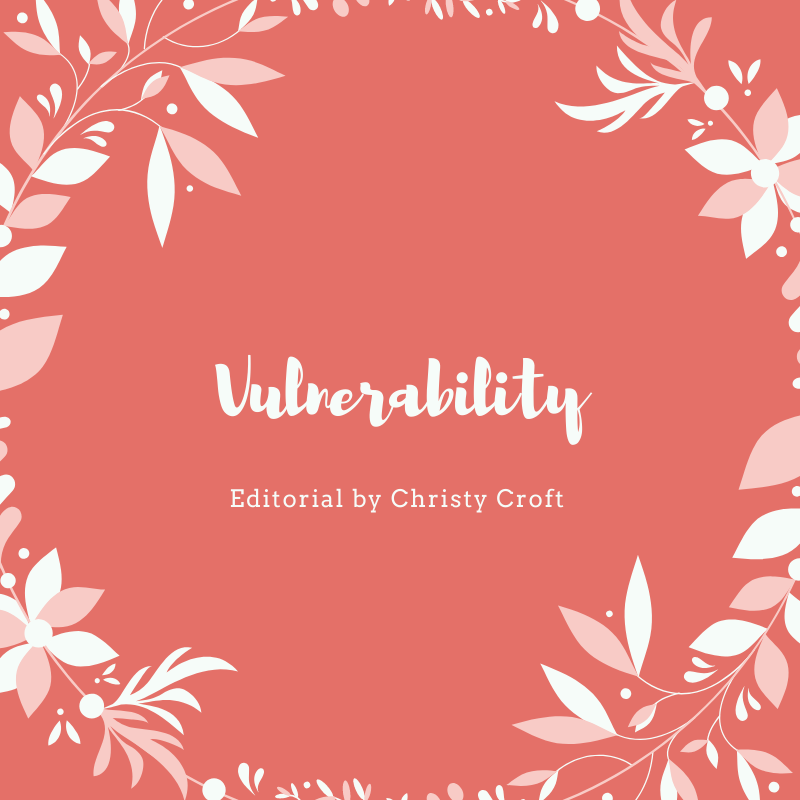"Vulnerability"
January 2, 2020
 /wp:image wp:paragraph
/wp:image wp:paragraph
It’s a word that often enters our dialogue about ending sexual violence, as we recognize that some populations are more vulnerable than others to exploitation and harm. This acknowledgement should be part of our dialogue: if we want to end sexual violence, we have to acknowledge disparities in rates of harm, access to services, and sensitivity of care. We have to think about making sure our message is inclusive, and develop messaging and protocols with the most marginalized people in our communities in mind.
/wp:paragraph wp:paragraphAnd yet, if all we do is change our wording and service provision to shift our focus to who is most vulnerable, we may run the risk of forgetting how vulnerability happens.
/wp:paragraph wp:paragraphRecently, I was on a Prevention Town Hall video meeting, and one presenter noted that the way we sometimes talk about vulnerability risks veering into systems-level victim blaming. “People aren’t typically inherently vulnerable,” they said. “Systems make people vulnerable.”
/wp:paragraph wp:paragraphVulnerability is created when communities leave people (or groups of people) to fall through the cracks, or when they create “solutions” that are inaccessible to or inappropriate for those who need them most. Vulnerability is created when systems have glaring gaps we’ve yet to identify, take seriously, or fill. Vulnerability is created when we fail to educate our stakeholders, collaborators, and potential funders about community and society level risk factors that are out of the control of the survivors we serve, or about the community level protective supports that change narratives, lives, and outcomes.
/wp:paragraph wp:paragraphSexual violence occurs not because of an inherent predisposition to being abused or assaulted, but because someone chooses to abuse or assault. Without that choice to harm another or deprive them of wellness, vulnerabilities would cease to be vulnerabilities.
/wp:paragraph wp:paragraphIn fact, many of the risk and protective factors for experiencing sexual violence are the same risk and protective factors that influence the incidence of perpetrating sexual violence. When we engage in systems advocacy and community or society level work to fill gaps and support marginalized communities, we reduce sexual violence by coming at prevention from all angles. When we create our direct services with those gaps (and an intention to mitigate their harm) in mind, we reduce revictimization and create healthier communities — communities that are less tolerant of violence and more responsive to the needs of survivors.
/wp:paragraph wp:paragraphWe have to remember that reduction of vulnerability begins with addressing the systems and community norms that leave people vulnerable. We have to remember that prevention of sexual violence starts with prevention of perpetration.
/wp:paragraph wp:paragraphA person’s race is not the risk factor; racism in the person’s community is.
/wp:paragraph wp:paragraphA person’s gender identity or orientation is not the risk factor; bias against women and LGBTQ people is.
/wp:paragraph wp:paragraphA person’s mental health status is not the risk factor; lack of community supports or protections for people with mental illness is.
/wp:paragraph wp:paragraphProgramming to provide support at the individual level is essential, which may include crisis intervention, support groups, advocacy, and therapy. Prevention education should reduce bias and adherence to oppressive norms. Prevention education should teach setting boundaries, but also receiving, respecting, and normalizing boundaries, and not taking them personally. When we teach about healthy relationships, we are educating those who might be harmed as well as those who might harm others. Healthy relationships and boundaries are for everyone! Healthy communities reduce vulnerability.
/wp:paragraph wp:paragraphWant to do a “vulnerability check,” and find out how your agency is doing?
/wp:paragraph wp:list- Check your website, promotional material, and curricula. How do you phrase references to vulnerability? Words matter, as they have the power to shape perception of an issue. We can still talk about vulnerability, but take note of the context and framing. How are you addressing systems in your outreach, awareness, promotional, and educational materials? How are you emphasizing a reduction in the perpetration of harm as a goal?
- Check your internal documents, training materials, and protocols, both for language around vulnerability as well as attention to community gaps and the impacts of marginalization. How are you working at the community and society level to prevent perpetration and improve conditions for survivors?
- Check your collaborative processes with other community stakeholders. Who else is working to fill the gaps that impact sexual violence prevention and response in your community? How are you working together on the shared risk and protective factors that impact both of your organizations?
- Take a look at your agency’s leadership (board and staff). Do they reflect your community? Do they reflect the marginalized communities you hope to serve, or have lived experience navigating some of those gaps to help inform your approach? If there is a population you hope to build capacity to serve, are they reflected in your leadership? Having people in leadership who reflect the communities you serve (in terms of past or present lived experience of specific vulnerabilities) increases the likelihood that your language, framing, and programs will serve them sensitively.
This editorial is by Christy Croft, NCCASA’s Prevention Education Program Manager.
/wp:paragraph ]]>

